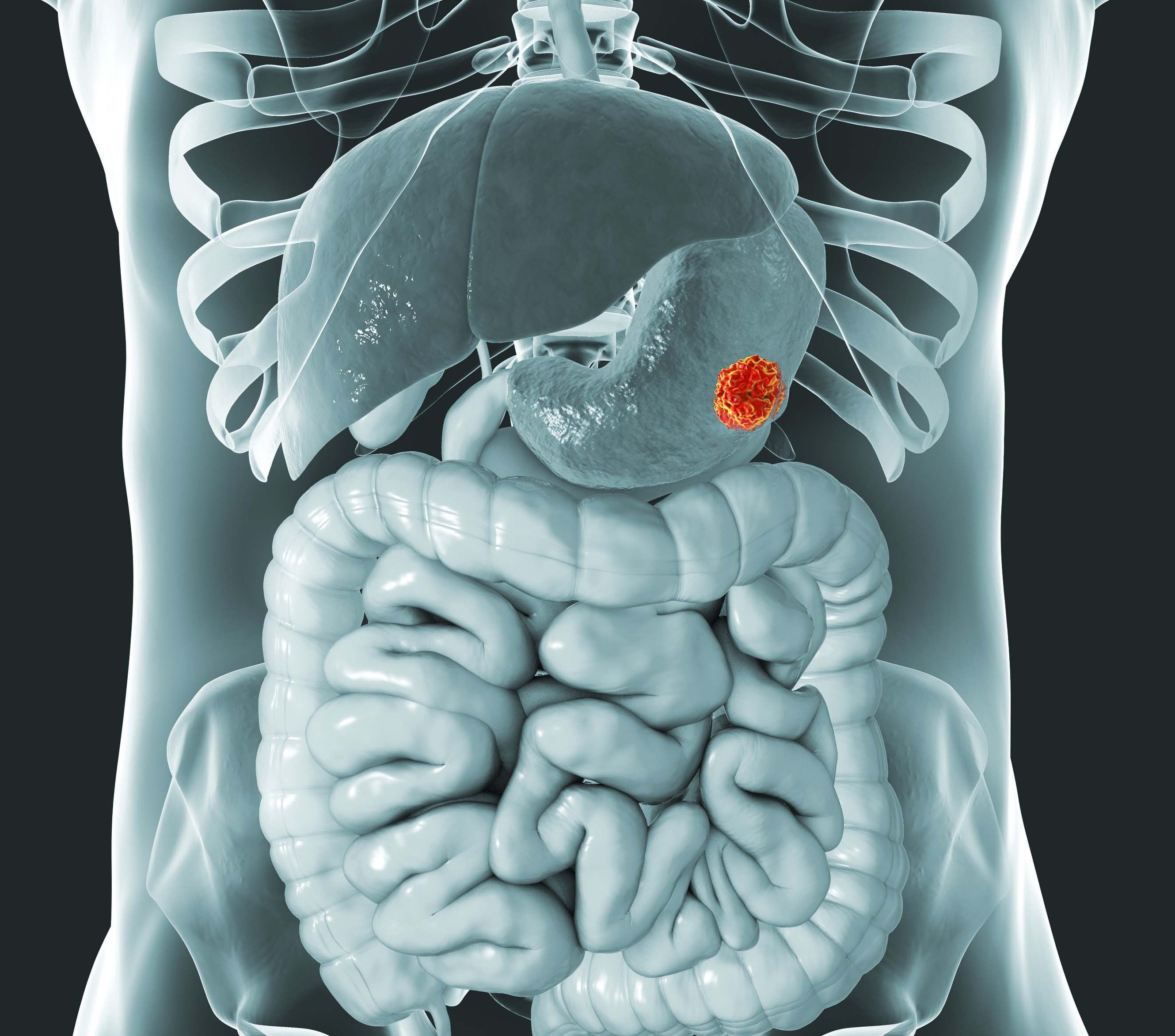Disitamab Vedotin/Toripalimab/Trastuzumab Yield Responses in G/GEJ Cancer
Disitamab vedotin, toripalimab, and trastuzumab demonstrated superior response rates and efficacy in HER2-overexpressing metastatic gastric cancers.
Disitamab vedotin, toripalimab, and trastuzumab demonstrated superior response rates and efficacy in HER2-overexpressing metastatic gastric cancers.

Frontline disitamab vedotin (DV; Aidixi), toripalimab (Loqtorzi), and trastuzumab (Herceptin) demonstrated superior response rates and efficacy vs DV, toripalimab, and chemotherapy in patients with HER2-overexpressing locally advanced or metastatic gastric or gastroesophageal junction (G/GEJ) cancer, according to findings from the phase 2 segment of a phase 2/3 trial (NCT05980481) shared at the 2025 American Society of Clinical Oncology (ASCO) Annual Meeting.
Among patients with HER2-overexpressing tumors (n = 51), the confirmed objective response rate (cORR) reached 82.4% in the DV, toripalimab, and trastuzumab arm compared with 68.8% in the control group after a median follow-up of 13.2 months. Notably, median progression-free survival (mPFS) was not reached (NR) in the treatment arm vs 14.1 months in the control arm (HR, 0.59; 95% CI, 0.20-1.70).
For patients with HER2-median/low-expressing locally advanced or metastatic tumors (n = 48), stage 1 results at a median follow-up of 10.4 months showed the cORR of 72.0% for patients who received DV, toripalimab, and capecitabine and oxaplatin (CAPOX) vs 47.8% in patients who received toripalimab plus CAPOX. The triplet regimen also extended mPFS to 9.9 months vs 7.2 months for the doublet (HR, 0.69; 95% CI, 0.32-1.47).
In stage 2 for the same cohort, dose optimization further reinforced these trends. Patients receiving DV at 2.5 mg/kg with toripalimab and CAPOX achieved a cORR of 71.4%, while those on DV at 2.0 mg/kg with the same combination posted a 66.7% response rate. The control arm (toripalimab plus CAPOX) had a cORR of 58.3%. Median PFS was NR, 8.3 months, and NR, respectively.
Summarizing the efficacy for each cohort, lead author Lin Shen, MD, said, “For the HER2-overexpressing patients, the DV at 2.5 mg/kg, toripalimab, and trastuzumab combination demonstrated the strongest efficacy. In the HER2-median/low cohort, the DV 2.5 mg/kg, toripalimab, and CAPOX regimen emerged as the preferred option.” Shen is the vice president of clinical oncology at Beijing Cancer Hospital and Peking University and deputy director, Beijing Institute for Cancer Research, in China.
Overall, in the HER2-overexpressing cohort, safety findings suggest that patients who received DV at 2.5 mg/kg, toripalimab, and trastuzumab were favored, as were patients who received DV at 2.5 mg/kg, toripalimab, and CAPOX in the HER2-median/low-expressing cohort in the stage 2 dose optimization portion.
Regarding specific grade 3 to 5 treatment related adverse events (TRAEs), the most common in the HER2-overexpressing cohort in arm 1 were decreased neutrophil count (61.1%), diarrhea (44.4%), and decreased platelet count (27.8%). For arm 2, the most common TRAEs were decreased neutrophil count (47.1%), anemia (17.6%), and hypokalemia (11.8%). For arm 3, the most common TRAEs were decreased platelet count (43.8%), anemia (18.8%), and decreased neutrophil count (12.5%).
For stage 1 in the HER2-median/low-expressing cohort, the most common TRAEs (grade 3 to 5) in the triplet arm was decreased neutrophil count (48%), diarrhea (44.0%), and decreased platelet count (28.0%). For the doublet arm, the most common TRAEs were decreased platelet count (34.8%), decreased neutrophil count (26.1%), and decreased lymphocyte count (13.0%).
For the stage 2 dose-optimization portion, the most common TRAEs in the DV at 2.5 mg/kg, toripalimab, and CAPOX arm were decreased neutrophil count (42.9%), hypokalemia (21.4%), and decreased appetite (21.4%). For patients in the DV at 2.0 mg/kg arm, the most common TRAEs were decreased neutrophil count (20.0%), diarrhea (13.3%), and hypokalemia (13.3%). For patients in the toripalimab plus CAPOX arm, the most common TRAEs were decreased platelet count (18.8%), anemia (18.8%), and decreased neutrophil count (12.5%).
Study Design
Patients in the HER2-overexpressing cohort were randomly assigned to 3 arms. Arm 1 received 2.5 mg of DV, toripalimab, and CAPOX. Arm 2 received DV at 2.5 mg/kg, toripalimab, and trastuzumab. Arm 3 received toripalimab, trastuzumab, and CAPOX.
The HER2-median/low cohort compared DV 2.5 mg/kg plus toripalimab and CAPOX vs toripalimab and CAPOX in stage 1, followed by dose optimization in stage 2.
To be eligible, patients had to be treatment naive to systemic chemotherapy for locally advanced or metastatic G/GEJ cancer, have histologically or cytologically confirmed unresectable locally advanced or metastatic G/GEJ cancer, and be either ECOG performance status 0 or 1. For each cohort, the primary end point was ORR, and secondary end points were overall survival, PFS, duration of response, and safety.
Across both cohorts, the majority of patients were male, the median age was consistent, and the dominant primary cancer was GEJ, with the exception of patients in the stage 2 dose-optimization arm, in which the number of patients with G or GEJ cancer was equal.
“An ongoing phase 3 study [NCT06944496] is evaluating DV, PD-1, and CAPOX vs PD-1 and CAPOX in patients with HER2-median/low-expressing locally advanced or metastatic G/GEJ cancer, and will further validate these findings,” Shen concluded.
Reference
Shen L, Peng Z, Li, C, et al. Disitamab vedotin (DV) plus toripalimab (Tor) and chemotherapy (C)/trastuzumab (Tra) as first-line (1L) treatment of patients (pts) with HER2-expressing locally advanced or metastatic (la/m) gastric cancer. J Clin Oncol. 2025;43(suppl 17):LBA4012. doi:10.1200/JCO.2025.43.17_suppl.LBA4012